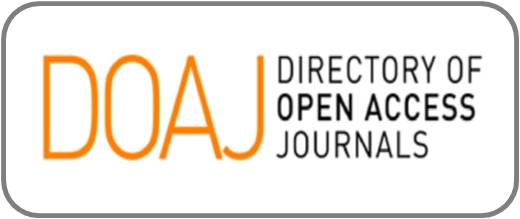Comparing Examination Modes in Finland and Bhutan's Education System and Suggestions for Improvement
DOI:
https://doi.org/10.47540/ijqr.v3i1.949Keywords:
Education System, Examination Methods, PolicyAbstract
This research paper delves into the assessment and examination systems of primary and secondary education in Finland and Bhutan. It analyzes Finland's exceptional performance in PISA and its assessment practices, emphasizing formative assessment and project-based learning. In contrast, Bhutan relies more heavily on standardized exams. The study identifies major similarities and differences, strengths, and weaknesses in both countries' examination modes. It investigates how these variations impact student learning outcomes in each nation. Through a qualitative comparative analysis research design, the paper focuses on exploring the examination methods in Finland and Bhutan's education systems. Based on the findings, the research proposes practical strategies for enhancing Bhutan's examination system. It suggests integrating formative assessment, introducing a blended approach in secondary education, and promoting research-based projects to improve the overall examination methods in Bhutan. While the study may not directly influence policy, it provides valuable insights into Finland's successful practices, which can be adapted to benefit Bhutan's education system.
References
Al-Tayib Umar, A. M. (2018). The Impact of Assessment for Learning on Students’ Achievement in English for Specific Purposes: A Case Study of Pre-Medical Students at Khartoum University, Sudan. English Language Teaching, 11(2), 15-27.
Australian Curriculum, Assessment and Reporting Authority (ACARA). My School; 2017c. Available:https://www.myschool.edu.au/.
Bahati, B. (2019). Technology-enhanced formative assessment in higher education: An intervention design of scaffolding student self-regulated learning (Doctoral thesis, Stockholm University, Sweden).
BCSEA. (2019). National Education Assessment Framework, Ministry of Education and Skills Development, Thimphu, Bhutan. Available:www.bcsea.bt.
BCSEA. (2022). Rules and Regulations of the conduct of public examinations in Bhutan, Ministry of Education and Skills Development, Thimphu, Bhutan. Available:www.bcsea.bt.
Bhutan Council for School Examinations and Assessment (BCSEA). (2019). Education in Bhutan: Findings from Bhutan's experience in PISA for Development. National Project Centre.
Biesta, G. (2015). What is education for? On good education, teacher judgement, and educational professionalism. European Journal of Education, 50(1), 75-87.
Bingham, A. J., Dean, S., & Castillo, J. (2019). Qualitative comparative analysis in educational policy research: Procedures, processes, and possibilities. Methodological Innovations, 12(2), 1-13.
Bozkurt, F. (2020). Teacher Candidates' Views on Self and Peer Assessment as a Tool for Student Development. Australian Journal of Teacher Education. Retrieved from https://ro.ecu.edu.au/ajte/vol45/iss7/3.
Dehham SH, Bairamani HK, Shreeb MA. (2020). Enhancing iraqi EFL preparatory school students’ speaking skill by using debate technique | Mejoramiento de la habilidad de hablar de los estudiantesiraquíes de ingléscomolenguaextranjeramediante la técnica de debate. Utopia y Praxis Latinoamericana. 25(Extra1);453–462.
Fadhlullah, A., & Ahmad, N. (2017). Thinking Outside of the Box: Determining Students' Level of Critical Thinking Skills in Teaching and Learning. Academy of Language Studies, Universiti Teknologi MARA Melaka, Faculty of Business and Management, Universiti Teknologi MARA Melaka.
Finnish Government. (2021). Education Policy Report of the Finnish Government. Helsinki, Finland.
Finnish National Board of Education (FNBE). (2020). National Core Curriculum for Basic Education.
Finnish National Board of Education. (2020). Helsinki. Finland.
G. Townend and R. Brown. (2016). Exploring a sociocultural approach to understanding academic self-concept in twice-exceptional students. International Journal of Educational Research, (80), 15-24,
Gyeltshen, K., & Zangmo, S. (2020). School Education in Bhutan: Policy, Current Status, and Challenges. In Handbook of Higher Education System in South Asia. Springer.
J. Lincoln and C. Riza, (2018), “Authentic Assessment in Business Education: Its Effects on Student Satisfaction and Promoting Behaviour,” Studies in Higher Education (Dorchester-on-Thames), 43(3), 401-415.
Jamtsho, S. (2015). Implementing a Whole-School Approach to Student Wellbeing: A Study Examining the Implementation Experiences of Bhutanese and Australian Teachers in Wellbeing Leadership Roles. (Doctoral dissertation). Melbourne Graduate School of Education. The University of Melbourne.
Kelly, K., Merry, J., & Gonzalez, M. (2018). Trust, Collaboration, and Well-Being: Lessons Learned from Finland. SRATE Journal, 27(2),
Ministry of Education and Culture. (2017). Education in Finland. [Education in Finland Series].
Ministry of Education and Skills Development (MoESD). (2020). 34th Education Policy Guidelines and Instructions. Thimphu, Bhutan: Policy and Planning Division.
Mogapi, M. (2016). Examinations Wash Back Effects: Challenges to the Criterion Referenced Assessment Model. Journal of Education and e-Learning Research, 3(3), 78-86.
National Center for Education Statistics. (2021). TIMSS 2019 U.S. Highlights Web Report (NCES 2021-021). U.S. Department of Education, Institute of Education Sciences.
National Statistics Bureau (NSB). (2021). Government of Bhutan. Labour Force Survey Report for Bhutan, Thimphu, Bhutan.
National Statistics Bureau (NSB). (2022). Royal Government of Bhutan. Bhutan Living Standard Survey 2022. Thimphu, Bhutan.
OECD, (2013), Education Policy Outlook Finland, Finnish National Agency for Education. (2022). Education in Finland. Retrieved from https://www.oph.fi/en.
OECD. Education Policy Outlook. (2020). Finland. Available:www.oecd.org/education/policy-outlook/country-profile-Finland-2020.pdf.
Policy and Planning Division. (2019). Royal Government of Bhutan. National Education Policy 2019. Thimphu, Bhutan.
R. Harris and B. Clayton, (2018), “Editorial: The importance of skills – but which skills?” International Journal of Training Research, 16(3), 195-199.
Rusitoru, M.V. (2018). The “Miracle” of Education Policies in Finland: Between Equity and Mutual Trust. From Performance to Excellence. Journal of Pedagogy, 2018(2), 93-102.
Soby M. (2015). Finnish education system. Nordic Journal of Digital Literacy, 10(2), 54-68.
UNESCO. (2012). Shaping the Education of Tomorrow: 2012 Full-Length Report on the UN Decade of Education for Sustainable Development.
UNESCO. (2019). Teacher Policy Development. Guide.
Wangdi, P. (2019). Vocational Education in Bhutan. The Druk Journal. Retrieved from http://drukjournal.bt.
Woods, J. (2017). Assessments 101: A policymaker’s guide to K–12 assessments. Education Commission of the States.
World Bank. (2021). School enrollment in Bhutan. Available:https://tradingeconomics.com/bhutan/children-out-of-school-percent-of-primary-school-age-wb-data.html.
World Economic Forum. (2017). The Global Competitiveness Report 2017-2018.
Published
How to Cite
Issue
Section
Copyright (c) 2023 Kinley Dorji

This work is licensed under a Creative Commons Attribution-ShareAlike 4.0 International License.

















